

Max Davies
2026 Toyota HiAce review
2 Hours Ago
The Hummer name is one of the most evocative in motoring. In 2020, it's been brought back to life on an electric ute. But in the 1990s and 2000s, a huge spread of companies tried to cash in on its tough image.

Design Contributor
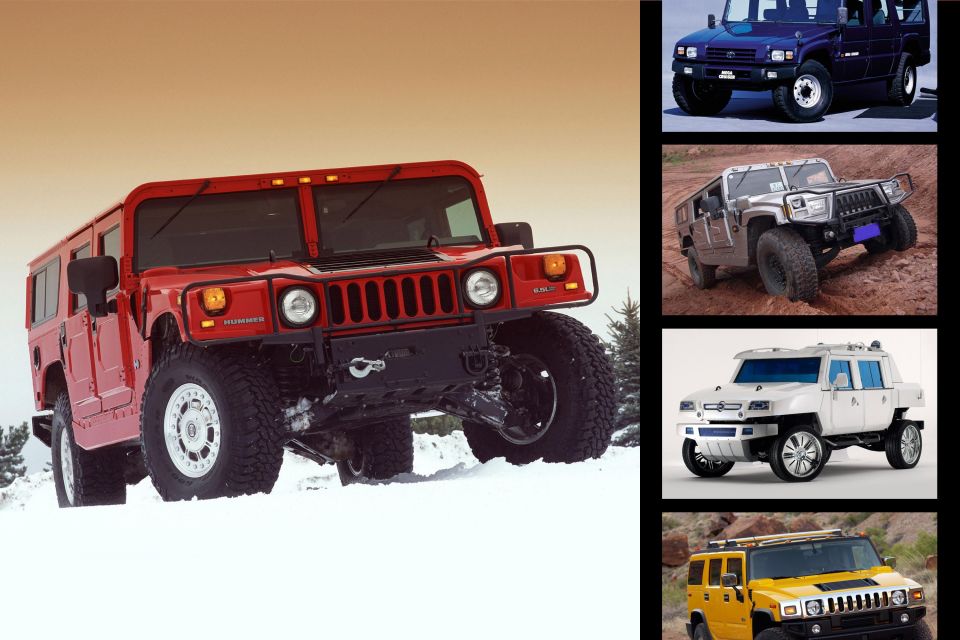

Design Contributor
With GMC launching the all-new, all-electric Hummer, we’ve decided to travel back in time and check out the original Humvee and other production models that have been inspired by its shape, size, and unique character.
In order to avoid confusion with the military, we chose to include only civilian versions of Hummer rip-offs. As it turns out, there have been plenty over the years.
Let’s start with a the original.
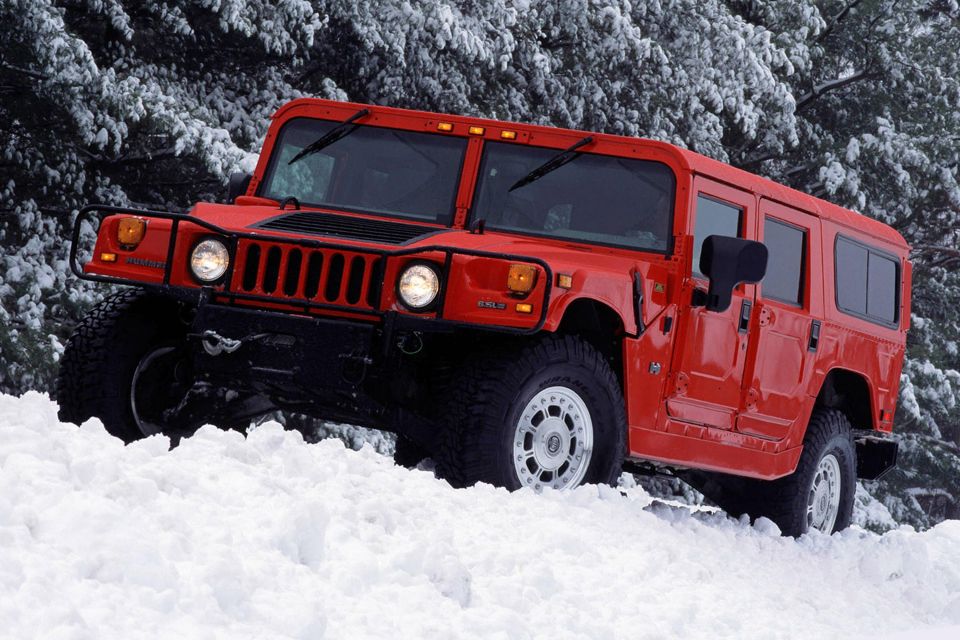
The Hummer was launched in 1992 as a civilian version of the Humvee (High Mobility Multipurpose Wheeled Vehicle) military truck that had been around since 1984. Like the war machine, it was designed, developed and produced by AM General.
In 1999 General Motors acquired the Hummer brand and renamed the model as the H1.
Through the years, the Hummer was available in various body styles (pick-up, wagon, soft-top), based on the same body-on-frame architecture and sharing most of their body panels. Under the bonnet were GM-sourced V8 engines ranging from 5.7-litres to 6.6-litres with power outputs from 110kW in the first years and up to 220kW toward the end of its production.
All Hummers were equipped with automatic gearboxes sending power to all four wheels.
Besides the huge ground clearance and the unbeatable approach and departure angles, the Hummer’s off-road credentials were accentuated by its portal axles, inboard brakes, front/centre/rear locking differentials, low-range transfer case, heavy-duty suspension, high-mounted air intake and radiator, wide tracks, and chunky tires with an automatic inflation/deflation system – all of which were inherited from the military Humvee.
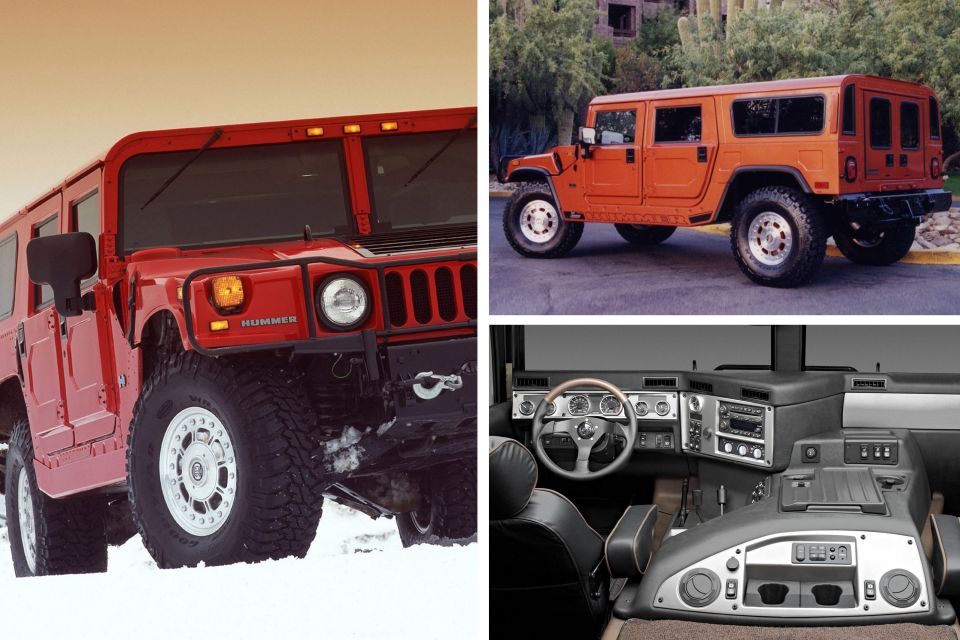
The now-iconic design of the Hummer was characterised by a non-exitstent front overhang. As for dimensions? It was humongous for its time, measuring 4686mm x 2197mm x 1966 mm, and had a boxy shape with vertical sides and an upright double windshield.
The seven-slit grille between the round headlights was reminiscent of the classic Jeep grille, which can be explained by the fact that both companies were once owned by the American Motors Corporation (AMC). In terms of style, one can notice similarities with earlier models like the Lamborghini LM002, the Mercedes-Benz G-Wagen and the Land Rover Defender, however the Hummer is considerably larger and heavier (more than 3500kg) than those vehicles.
Inside, the sheer width was instantly noticeable from the huge centre console and transmission tunnel. Despite its size, passenger space was limited and different versions of the car could seat between four and six people depending on the layout.
The first owner of the civilian Hummer was Arnold Schwarzenegger, with many other celebrities following his example. Eventually, the H1 became a status symbol in the USA, as one of the largest and most rugged vehicles money could buy.
Between 1992 and 2006, a total of 11,818 civilian versions of the Hummer were produced, before the huge, expensive and thirsty automobiles went out of fashion due to environmental ethics, emission regulations, and eventually the forthcoming financial crisis.
The ultimate Hummer remains the H1 Alpha (2005-2006) – a significantly redesigned version that was improved in every single aspect compared to its predecessors.
Now we’ve covered the basics of the Hummer, let’s see some of the cars it inspired.
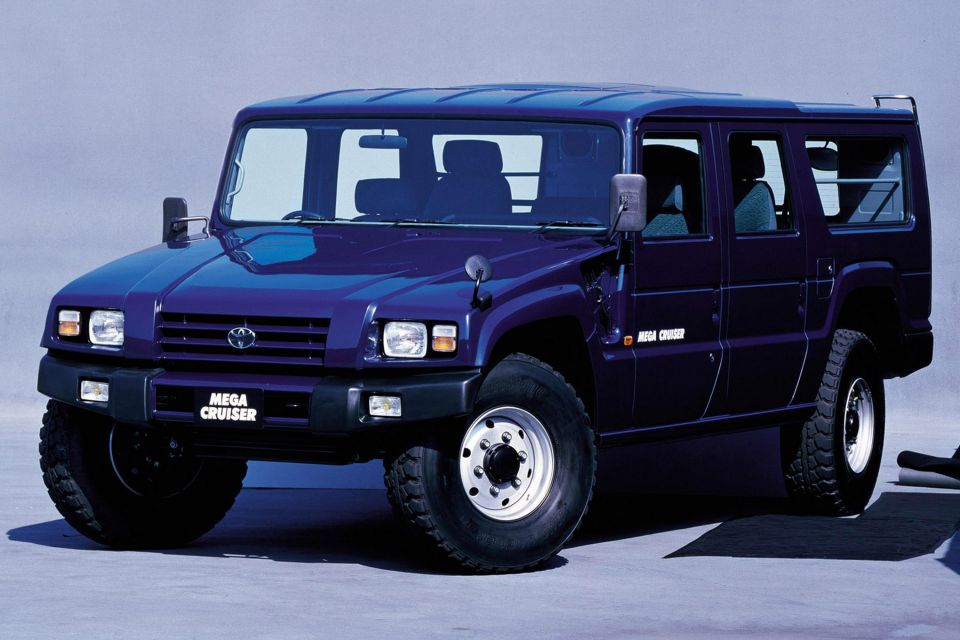
The Mega Cruiser was launched in 1995 as the civilian version of the BXD10 which was already used by the Japanese defence forces, police, and fire brigade.
It was based on a custom ladder-type chassis with a turbocharged four-cylinder 4.1-litre diesel engine producing a mere 114kW and 382Nm. Power was sent to all four wheels through a four-speed automatic gearbox with the help of front, centre, and rear locking differentials.
It also came with portal axles, independent suspension, in-board brakes, a tire inflation system, and all-wheel steering.
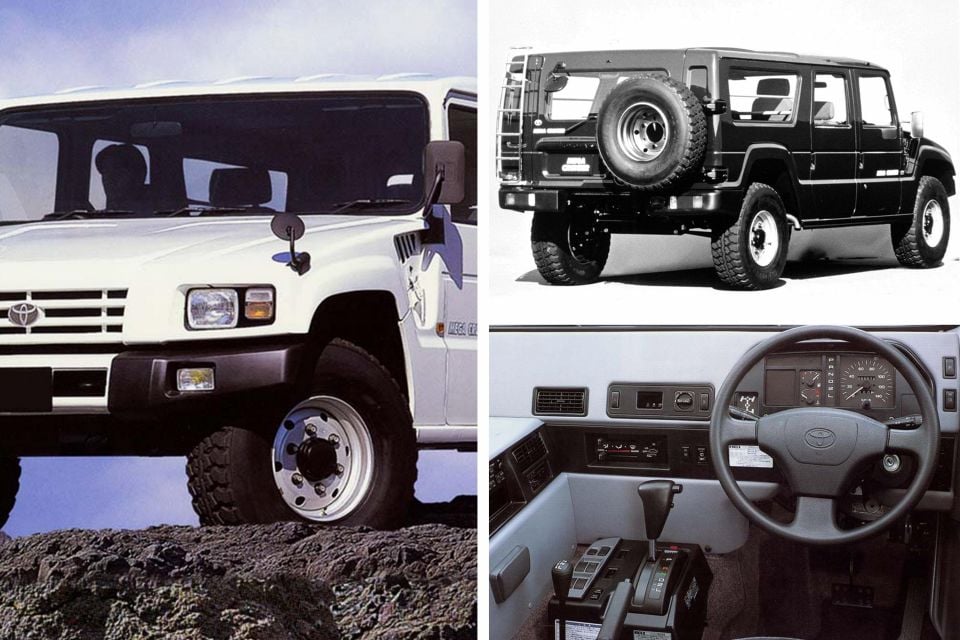
Design-wise the Hummer references were obvious, in terms of style and proportions, even though the Mega Cruiser was longer (5090mm), taller (2075mm), a tad narrower (2169mm), and a lot lighter (2.9 tonnes) than its American counterpart.
The road-going version had softer tuning and more amenities, with six passenger seats arranged in two rows, a huge cargo space, a ladder, a practical roof rack, more premium upholstery, a stereo system, and an optional high-roof.
The Mega Cruiser was produced between 1996 and 2002, exclusively available in the Japanese market. During this period, Toyota sold less than 150 vehicles to civilians (among the 3000 produced), and the project was deemed a commercial failure even though it served its purpose as a test bed for future technologies that found their way in the LandCruiser.
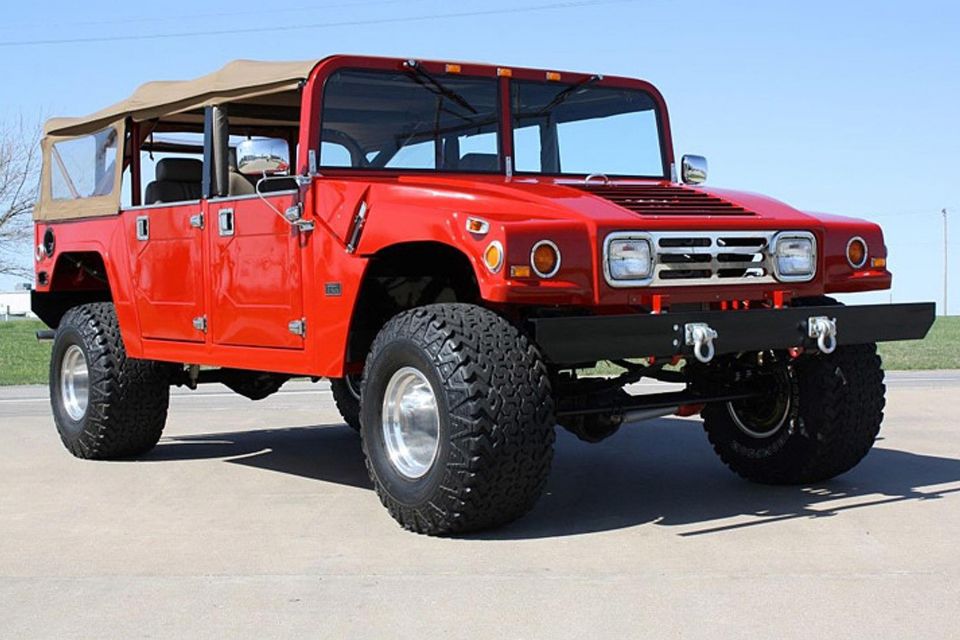
The T-Rex, produced by the Jurassic Truck Corporation from Texas, was a Hummer lookalike kit car based on a GM chassis.
The American company offered pre-assembled kits, compatible with a rolling chassis from a donor Chevrolet Suburban (1973-1991) that could be fitted with any GM engine and transmission combination.
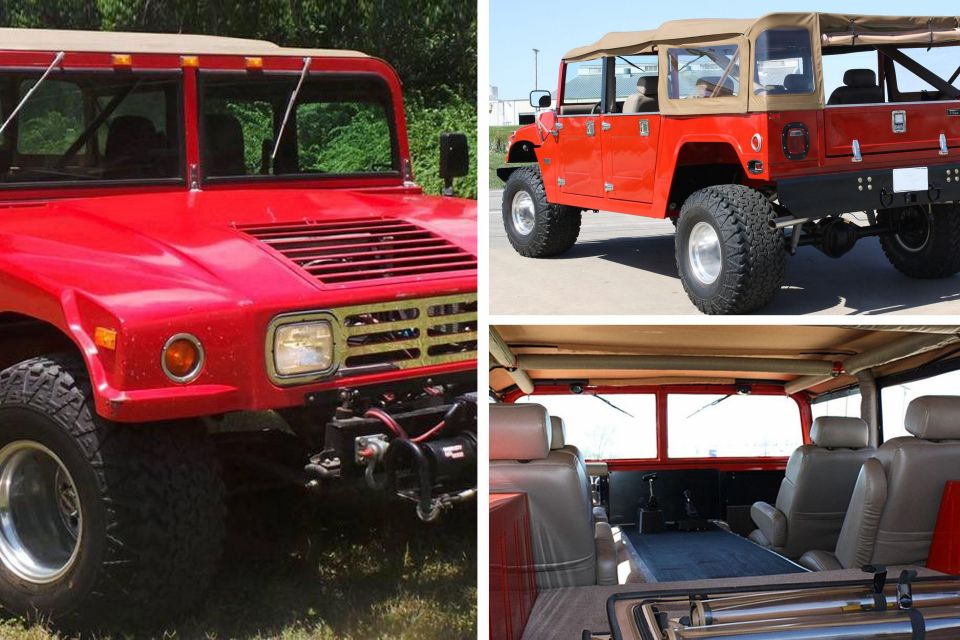
The exterior design was pretty similar to the original Hummer with a boxy look, rounded rectangular headlights and taillights, double windshield, uncovered wheels, metal bumpers and a convertible soft-top and a simple interior. However it had smaller dimensions, it was lighter, and didn’t have the highly advertised off-road capabilities of the Hummer due to the borrowed mechanical components.
Despite the shortcomings, the T-Rex was offered at a very competitive price. It is believed that around 115 models were produced in total, before the company closed its doors for unknown reasons.
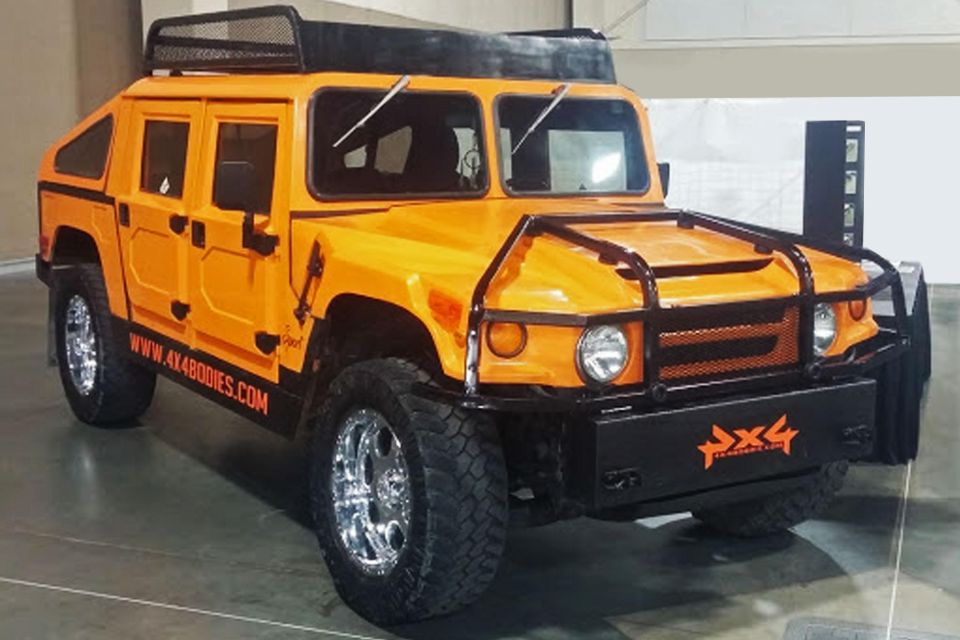
Another kit car company with a product heavily inspired by the Hummer is Urban Gorilla LLC.
The Utah-based company has been producing steel and fiberglass bodies since 1997 in two-door, four-door, and six-door variations, with a “combat” (pick-up with no doors) or a “slant back” (wagon) design. According to their website the kits are compatible with ladder-type chassis by Ford, Chevrolet, General Motors and Dodge pick-up trucks – ideally with a wheelbase of 3300 mm.
The vehicles can use V8 and V6 engines from the donor cars according to customer preferences.
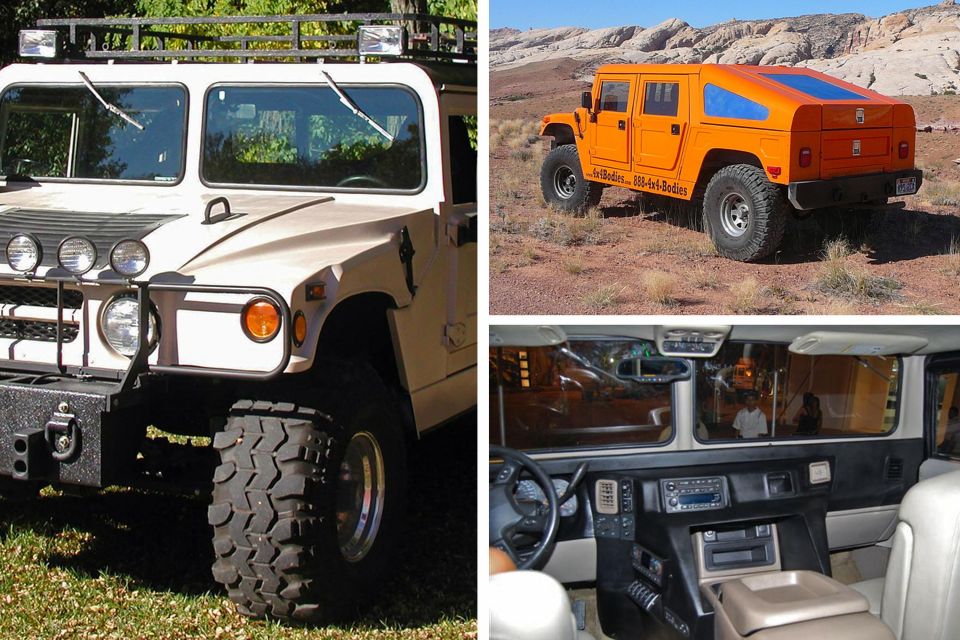
Design-wise, the references to the H1 are numerous, with similarities in the profile, glasshouse, bonnet, round headlights, wheel arches, and doors. That resemblance caused AM General and new owner General Motors to take Urban Gorilla to the courts, over alleged trademark infringement.
Finally, GM won the battle forcing the company to make several changes in the design of the vehicle and abandon the use of the word Hummer in promotional content.
The Urban Gorilla bodies were quite affordable in pricing, however the company managed to sell only a little over 100 kits between 1997 and 2008.

The EQ2050 Mengshi, nicknamed “brave warrior”, is a military vehicle produced by Dongfeng Motor Group.
The project started sometime during the ‘90s, when Chinese firms Dongfeng, Shenyang Aircraft Corporation (SAC) and Xiaolong reverse-engineered the Hummer to build their own multi-purpose vehicles for the Chinese army.
In the first years of production Dongfeng sourced the parts directly from AM General, but it gradually managed to produce everything in-house, even the licensed turbo-diesel Cummins engine producing 110kW.
Design-wise, the Chinese Hummer retains the same dimensions and overall design, but is differentiated by small details like the unique headlight and grille layout.
In order to avoid the embargo set on China concerning military products, Dongfeng had to make a civilian version of the car – which is where things become a little bit murky. There might be several examples of the Mengshi roaming around the streets, but there’s not an official way of buying and registering this vehicle.
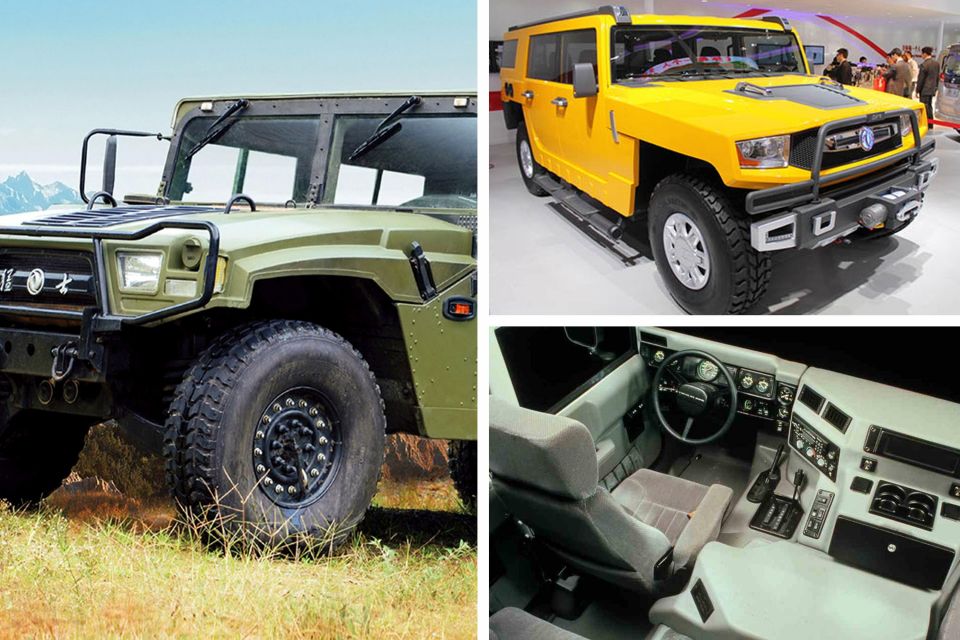
Technically a civilian version of the Mengshi exists, but we don’t have much information about it – other than it looks and probably drives like a Hummer H1.
Dongfeng presented the EQ2050 M3D concept car at the 2012 Beijing Auto Show with a more modern SUV-like design destined for road-use, next to a smaller HUV concept. Two years later, at the 2014 Beijing Auto Show, Dongfeng launched the EQ2040H prototype which looked production-ready, bearing closer resemblance to the military Mengshi.
Unfortunately, nothing has happened since then and there is no official information about the current state of the project. As for the vehicles used by the military and the police, over the years Dongfeng evolved the Hummer-based design into new, larger, more capable and better performing 4x4s.
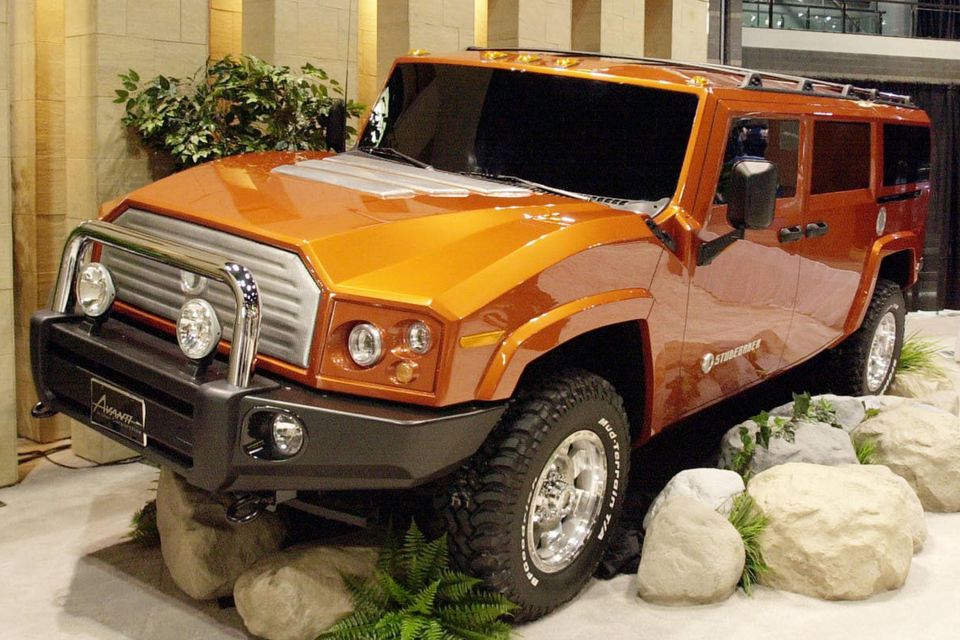
Avanti Motor Corporation tried to resurrect the Studebaker name with the Avanti Studebaker Xtreme Utility Vehicle (XUV) presented at the 2003 Chicago Motor Show.
The Studebaker XUV shared its underpinnings with the first-generation Ford Super Duty (1999-2007), explaining its impressive length of 5486mm. Under the bonnet was Ford’s 6.8-litre V10 Triton engine producing 231kWand 576Nm, while a 6.0-litre Powerstroke V8 diesel was an option.
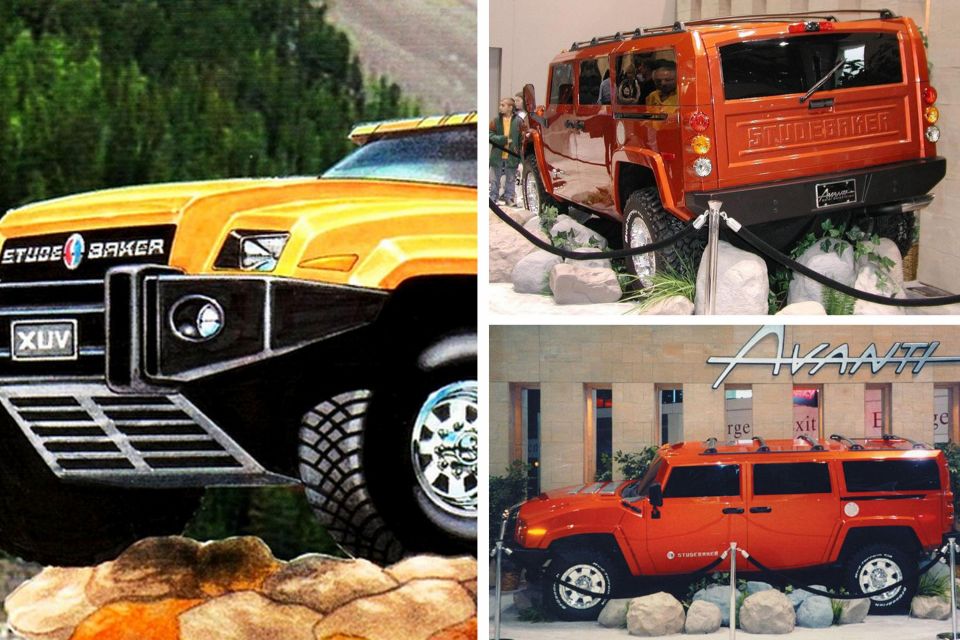
The model was aimed at the flagship 4X4 market with imposing dimensions and a boxy design.
The similarities with the Hummer H2 prompted General Motors to take legal action in order to avoid customer confusion. After discussions, the two companies reached an agreement, and as a result Avanti presented a second concept car with altered design at the 2004 Chicago Motor Show.
Avanti wanted to release the Studebaker XUV to the US market, with a yearly production of 1000 units. This plan never materialised because the company’s owner was arrested by the FBI for participating in an illegal investment scheme, and Avanti declared bankruptcy in 2007.
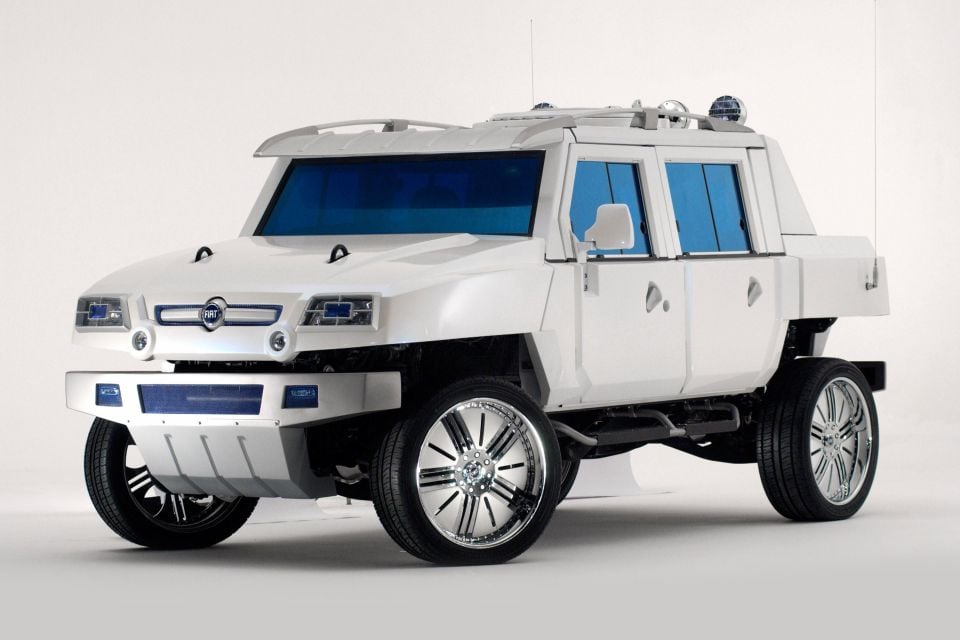
At the 2005 Bologna Motor Show, Fiat presented the Oltre, an unconventional design study which looked like an Italian version of the Hummer.
The Oltre shared its underpinnings with the Iveco LMV, a military off-road vehicle used by the Italian and the British Army. Thus, it had generous dimensions measuring 4870mm x 2200mm x 2050mm, a 500mm ground clearance, a heavy-duty independent suspension, and more than decent off-road angles.
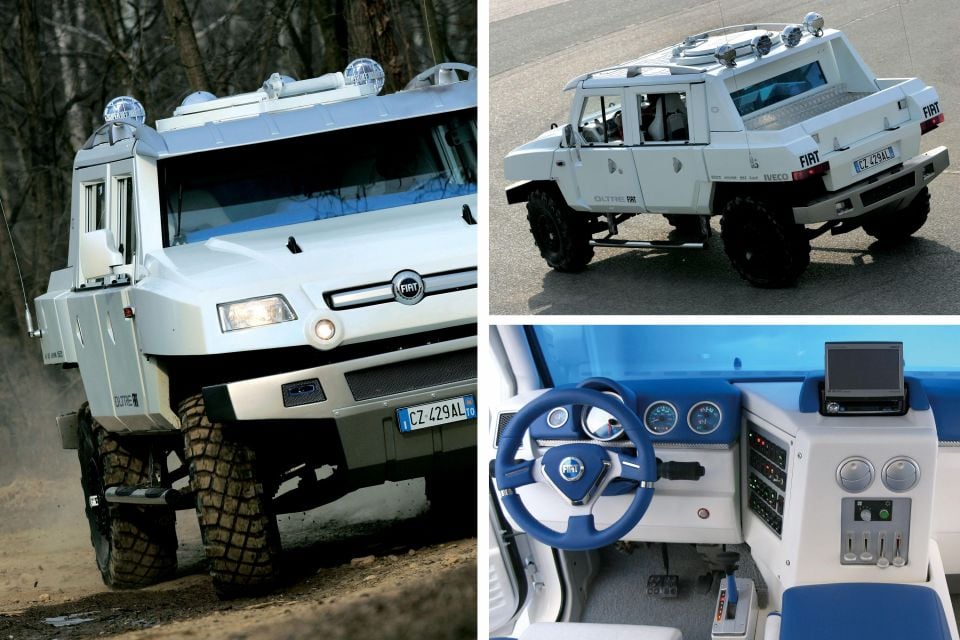
Under the bonnet was a turbocharged four-cylinder 3.0-litre diesel engine sourced from Iveco, producing 136kW and 456Nm. It was mated to a six-speed automatic sending the power to all four wheels with the help of three locking differentials.
Design-wise, the Oltre had a boxy shape with modern details like the Fiat grille, distinctive headlights, metal bumpers with integrated skid plates, retractable side steps, 26-inch rims with low-profile tires, a practical roof rack with an adjustable sunshade and additional lights, four military-style doors with recessed door handles and a pick-up bed.
Inside it had a spartan but colourful dashboard with a stereo system, digital screen, climate vents, round gauges, and a three-spoke sporty steering wheel.
As you can imagine, the Fiat Oltre didn’t go past the concept stage. A production plan for a vehicle of its kind was not viable, so it remained a one-off and it is currently showcased in the new FCA Heritage Hub in Italy.
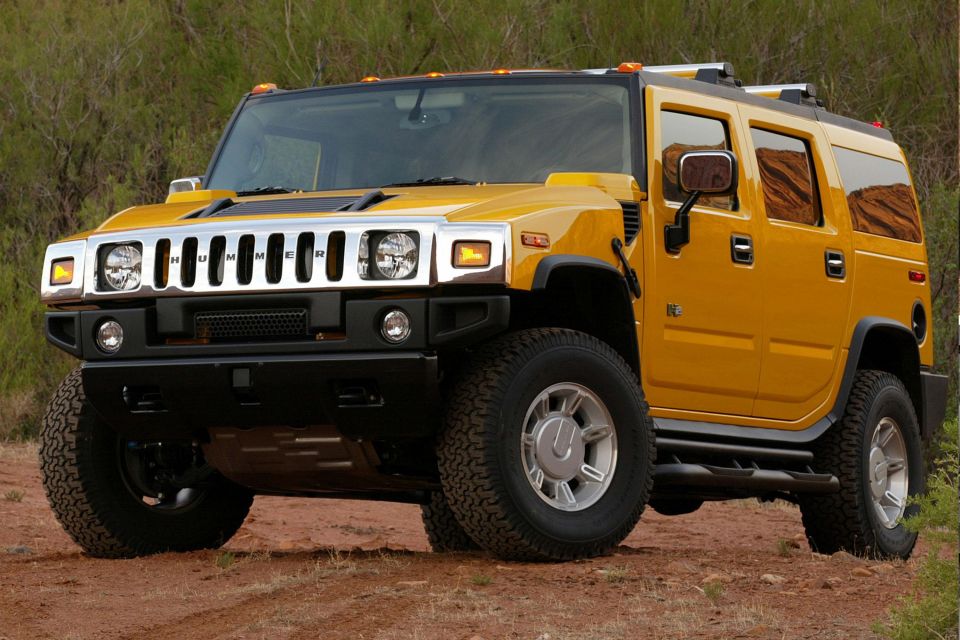
We couldn’t end our list without mentioning the H2, the second generation of the Hummer which appeared in the 2000s by General Motors, designed exclusively for civilian use. The H2 was cheaper and more civilised than the H1, appealing to a broader audience.
The H2 was built by AM General in Mishawaka, Indiana under contract from General Motors. It was based on a custom modified Chevrolet platform using parts from the Tahoe as well as the Silverado 1500 and 2500 HD trucks.
Under the bonnet was a GM V8 engine with a displacement of 6.0 litres (later 6.2 litres) producing between 236kW and 293kW. Power was sent to all four wheels through a four-speed and later six-speed automatic transmission.
Despite the power bump compared to the H1, the H2 wasn’t particularly quick due to its weight (2900-3000kg). It wasn’t nice to drive due to the truck-derived chassis and was one of the worst-performing vehicles in terms of fuel consumption due to the brick-like aerodynamics.
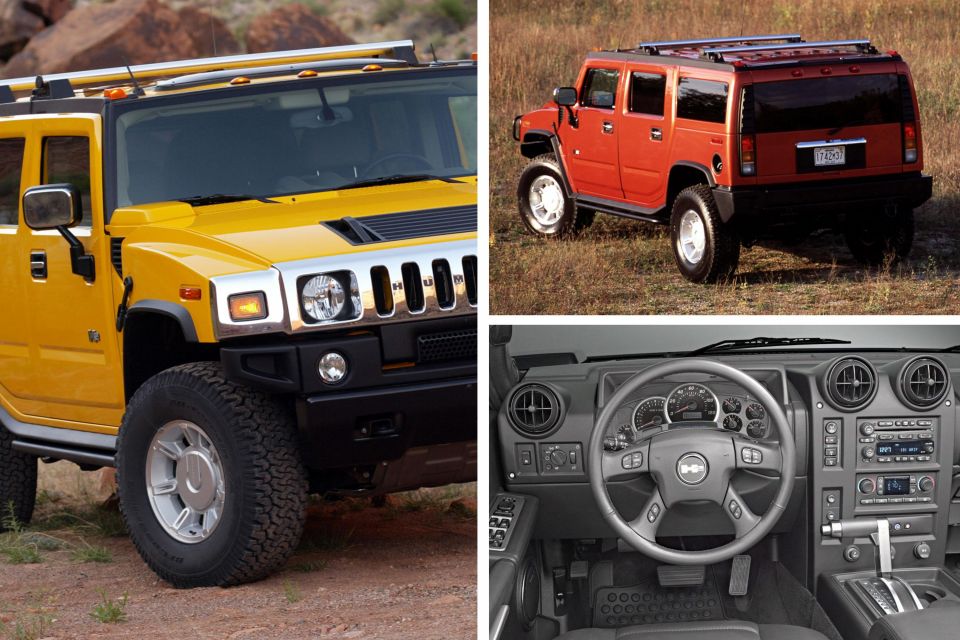
The exterior design of the H2 was modernised with softer edges, and more chrome and plastic – while retaining most of the signature elements of its predecessor like the large ground clearance, short overhangs, seven-slit grille, round headlights, bonnet bulge, almost vertical sides with tiny windows, and imposing dimensions.
Speaking of size, the H2 was even larger than the H1 measuring 5169mm x 2065mm x 2007mm. However, it was merely designed as a lifestyle vehicle, losing the form-follows-function character of the military H1. Similarly, the five-seater cabin looked more conventional, and was often criticised by the extensive use of cheap GM plastics.
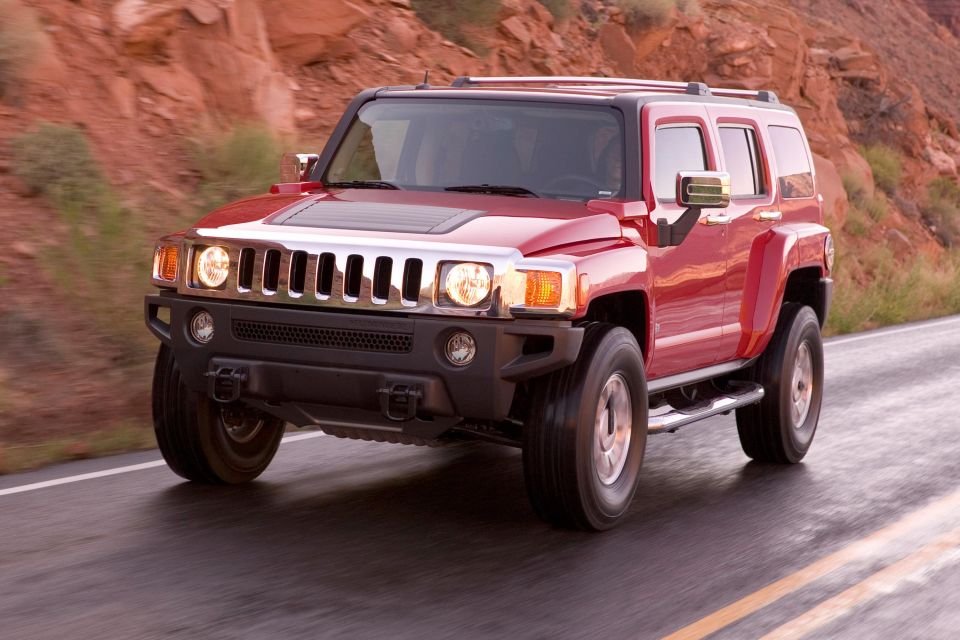
In 2005, Hummer launched a third model – the H3 – based on a Chevrolet Colorado platform, fitted with a five-cylinder 3.5-litre engine producing 164kWand later a 3.7-litre producing 179kW. The H3 and its pick-up version the H3T had a very similar design to the H2, however they were significantly smaller and even more affordable, aiming at SUV buyers.
Hummer built a total of 153,026 H2s (2002-2009), and 159,529 H3s (2005-2010). Unfortunately, as a result of the global financial crisis, parent company General Motors filed for bankruptcy in 2009.
Hummer was for sale, as its product range was no longer relevant or viable. Initially the Chinese company Sichuan Tengzhong was interested in its acquisition, but the Chinese government didn’t approve the deal so by the end of 2010, Hummer was officially dead
Fast forward to 2020, the Hummer nameplate is being resurrected in the form of a brand new fully electric pickup truck and SUV – both under the GMC brand.
MORE: GMC Hummer officially revealed, Australian plans unclear


Max Davies
2 Hours Ago


William Stopford
18 Hours Ago


Ben Zachariah
19 Hours Ago


Derek Fung
20 Hours Ago


Matt Campbell
1 Day Ago


William Stopford
2 Days Ago